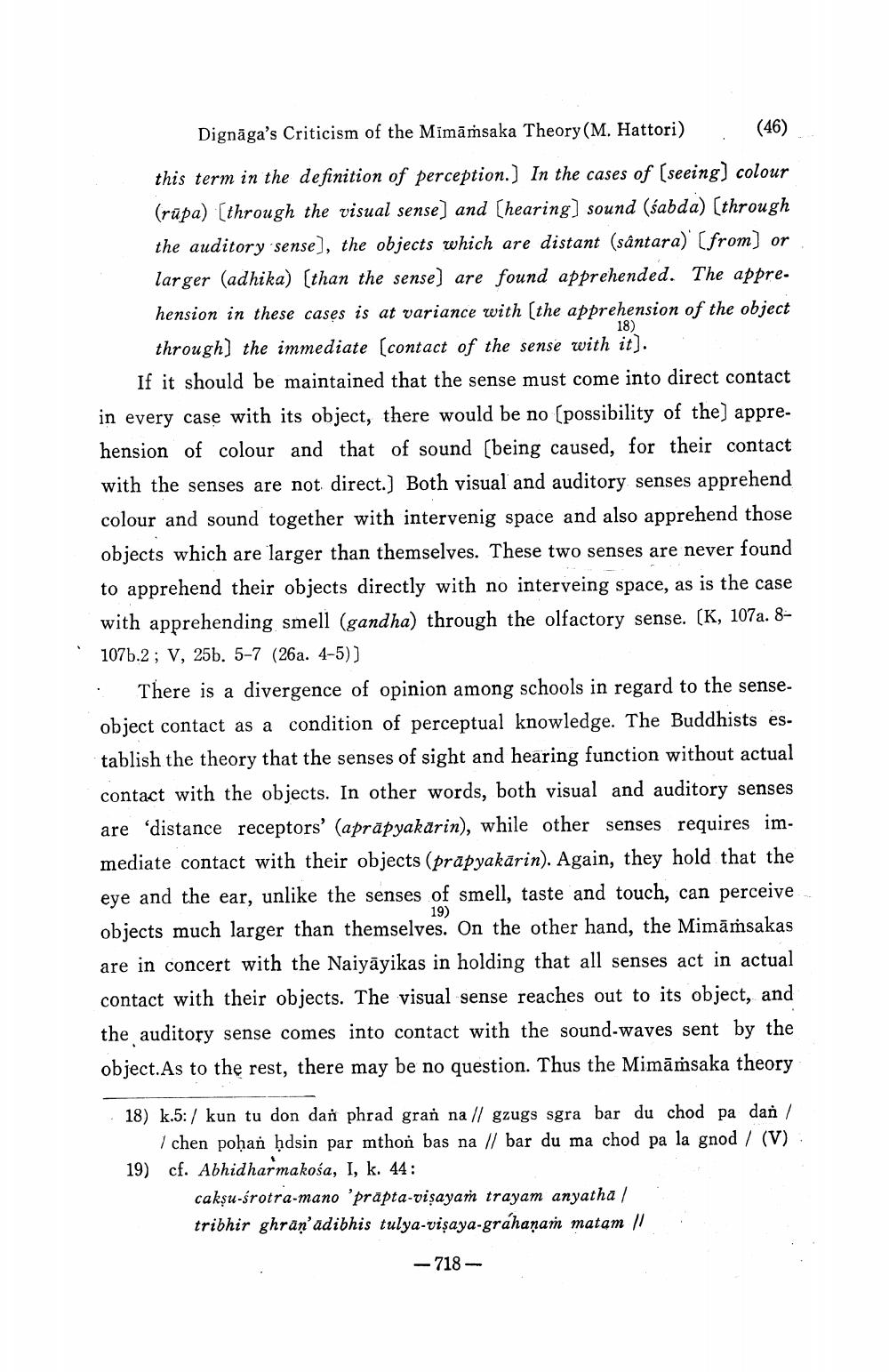________________
Dignaga's Criticism of the Mimamsaka Theory (M. Hattori)
(46)
this term in the definition of perception.] In the cases of [seeing]) colour (rupa) [through the visual sense] and [hearing] sound (sabda) [through the auditory sense], the objects which are distant (sântara) [from] or larger (adhika) [than the sense] are found apprehended. The apprehension in these cases is at variance with [the apprehension of the object
18)
through] the immediate [contact of the sense with it).
If it should be maintained that the sense must come into direct contact in every case with its object, there would be no [possibility of the] apprehension of colour and that of sound [being caused, for their contact with the senses are not direct.] Both visual and auditory senses apprehend colour and sound together with intervenig space and also apprehend those objects which are larger than themselves. These two senses are never found to apprehend their objects directly with no interveing space, as is the case with apprehending smell (gandha) through the olfactory sense. [K, 107a. 8107b.2; V, 25b. 5-7 (26a. 4-5)]
There is a divergence of opinion among schools in regard to the senseobject contact as a condition of perceptual knowledge. The Buddhists establish the theory that the senses of sight and hearing function without actual contact with the objects. In other words, both visual and auditory senses are 'distance receptors' (aprapyakarin), while other senses requires immediate contact with their objects (prapyakarin). Again, they hold that the eye and the ear, unlike the senses of smell, taste and touch, can perceive objects much larger than themselves. On the other hand, the Mimāmsakas are in concert with the Naiyayikas in holding that all senses act in actual contact with their objects. The visual sense reaches out to its object, and the auditory sense comes into contact with the sound-waves sent by the object. As to the rest, there may be no question. Thus the Mimaṁsaka theory
19)
18) k.5: kun tu don dan phrad gran na // gzugs sgra bar du chod pa dan / /chen pohan ḥdsin par mthon bas na // bar du ma chod pa la gnod / (V) 19) cf. Abhidharmakośa, I, k. 44:
caksu-śrotra-mano 'prapta-visayam trayam anyatha
tribhir ghran' adibhis tulya-viṣaya-grahanam matam ||
-718




